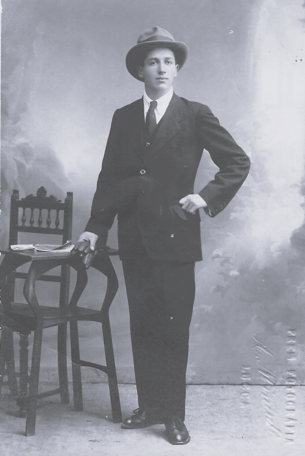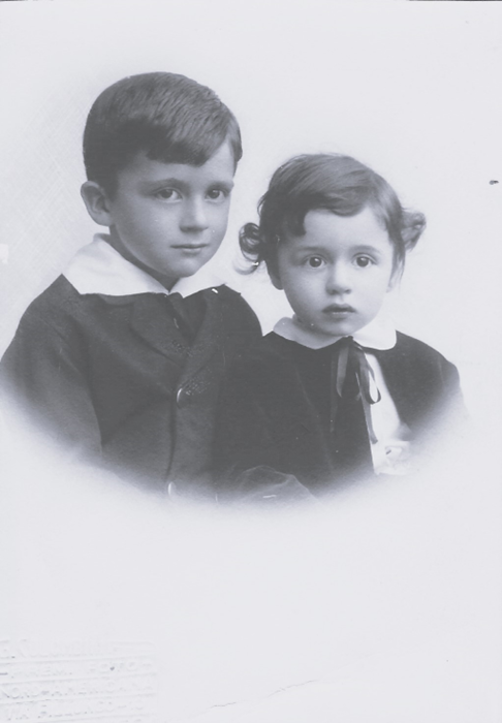1930 – 1945
Early Life
I take a thick pencil
me & the paper
carefully intensely
I draw
every object holding still
to watch me absorbed in the act
a bit unusual
for a 3 year old child
that has gone through the day
full of restless movement
with a thirst of discovering
the new in hidden places
two separate movements
one of perennial motion
the other totally deeply
absorbed in concentration
excluding all
but full of precious meaning
in the act of drawing
I knew then I was an artist
Excerpt from Poem, October 16, 1990
Aldo Tambellini
1931 - 1939
As a child, Tambellini showed early promise in the arts, drawing and painting with great skill at the age of just three. At the age of five Tambellini came down with pneumonia, bronchitis and pleurisy which left him bedridden for several months. To entertain him, his mother purchased a battery-operated Lanterna Magica projector, which came with film strips of cowboys. He organized a theater in his home, providing screenings to his friends. Shortly after, his mother gave him a Marinette theater. Tambellini would paint scenery and write plays, staging performances from his window for the audiences below. Later in life, Tambellini would give credit to these early experiences, with toys, as an important influence on the art of filmmaking and performances.
1940-41
At age ten, Tambellini’s mother enrolled him in the Passaglia Art Institute in Lucca. There, he studied Art History, Fine Arts, and classical Italian and Greek literature. His earliest literary influence, during this time in his life, came when he was required to memorize and analyze cantos from Dante’s Inferno. The darkness from the Inferno would color his work throughout his life.
It was also during this period in Tambellini’s life, when he first started writing poetry.
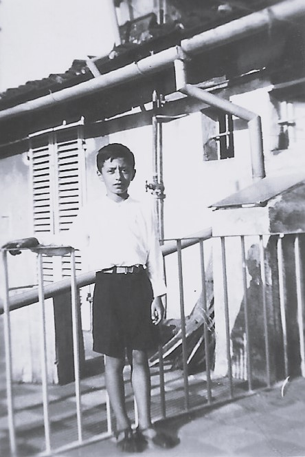
1942-43
1942 and 1943 were the most frightening years of Tambellini’s childhood. Fascist Italy’s alliance with Nazi Germany and entrance into WWII ushered in a time when military discipline was inflicted on all Italians. A Fascist director took over the art institute Tambellini attended. Knowing Tambellini was an American citizen who soon would be returning to the United States, the director bullied, struck, and tormented Tambellini. During this time, each Saturday was dedicated to indoctrination lessons, by the Fascists, for all school-aged children. Tambellini, whose Saturdays were reserved for carrying a portable easel into the field to paint, refused to comply with the new regulation. This left his mother to make up lies to the Fascists who looked for him. Eventually, the enforcers stopped searching for Tambellini, something he recalled as his first victory against a cruel and powerful establishment.
once
on epiphany day
january 6 ’44*
at exactly 1:00 p.m.
we all looked at the sky
knowing the american b29s
were moving in our direction
we did not move
it was a numb fascination
conditioned by months of false alarms
once
the bombs dropped
destroying the neighborhood
that was mine
in those details contained in childhood secrets
once
I saw the earth hurled by force
in chunks lifting to the sky
friends & neighbors died
others survived deformed
once
I heard mothers calling
familiar names in desperation
once
at the first detonation
I jumped off the bike
face touching my street
laying under shattered glass falling
walls ripped open
Excerpt from Poem, August, 1990, Aldo Tambellini
1944
An air strike killed twenty-one of Tambellini’s neighbors, destroyed his neighborhood, and forced his family to take refuge with his aunts in the nearby countryside of Guamo. There, Tambellini was at peace, but in just few months, the tranquil farm life, which was full of creating art, was disrupted by the arrival of Nazi soldiers. These soldiers took over the farm and began a period of terror, which included a list of rules, that, if not followed, were punishable by death.
The routine of living under Nazi occupation went on for months and then, all at once, frightening and relentless shots were exchanged from the farm into the distant hills. This went on for days. One night, it all became silent. At daybreak, Tambellini and others cautiously left their hiding places and realized that the Nazis had deserted the farm during the night. As they looked to the mountains, towards Pisa, they saw clouds of dust approaching Guamo. Soon, they realized that the dust was coming from approaching American jeeps. Everyone ran towards the jeeps with cries of joy and liberation. It was then that Tambellini saw the faces of the black American soldiers, his first introduction to African American culture, who had come to end his nightmare. Later, Tambellini learned that the battalion that had rescued him and his family was the segregated 92nd Infantry Division, the so-called Buffalo Soldiers. This all black group of servicemen, under the command of white leaders, had been promised their own liberation from segregation in America in exchange for their service. This unforgettable experience, at an early age, left a lasting impression on Tambellini, shaping his commitment to anti-war and radical politics.
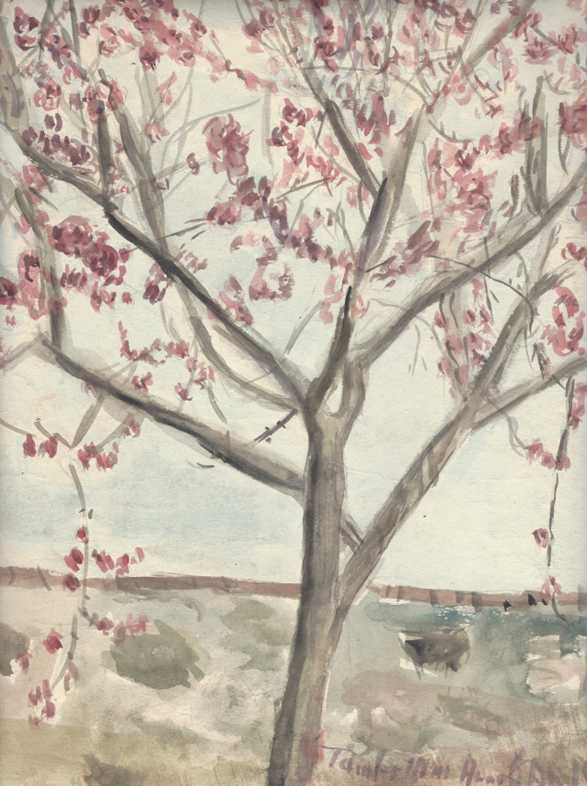
Tambellini’s watercolor, created during the Nazi occupation of his family farm in Guamo, 1944

Tambellini (right) with school friend, Lucca, Italy, ca. 1946
1945-1946
After being liberated, Tambellini and his family moved back to Lucca and Tambellini returned to the Art Institute. Thrilled to find his collection of artwork intact, he was devasted when the director of the institute refused to let him touch any of his work. Driven to find new creative outlets, Tambellini created murals for the Italian veterans in a hospital in Lucca, painted scenery, took part in a play presented to the veterans, and painted a mural for the American G.I. Club.
Being a US citizen, Tambellini was granted the right to return to America, where his father was living. His brother Paul, also a US citizen, was drafted by the US Army while in Italy and required to stay there. At the same time, Tambellini’s mother was starting to show signs of mental illness. It was at this point that Tambellini’s father and brother made arrangements for Tambellini and his mother to return to America, something Tambellini did not want to do. He was frighted by the thought of living with his father, a man who regularly beat Tambellini and the rest of his family during his visits to Italy. Leaving his grandparents, aunts, uncles and cousin, Tambellini’s support system and the only family he knew, terrified him.
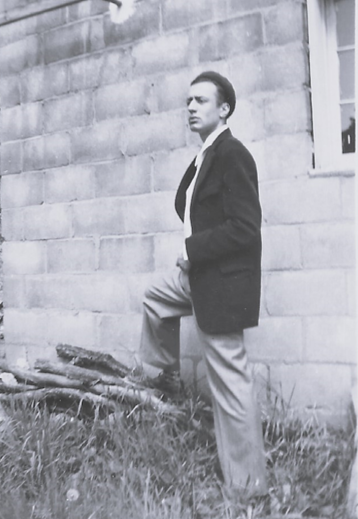
Tambellini, ca. 1946
NEXT CHRONOLOGY CHAPTER
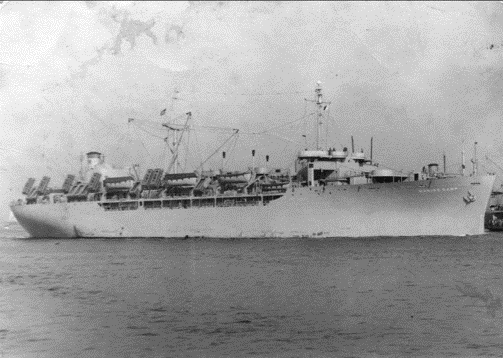
1946 - 1959
Return to America
After Tambellini and his family were liberated by the Buffalo Soldiers, Tambellini and his mother returned to America on the United States Naval Ship, Marine Carp. Upon their arrival, they were met by Tambellini’s father and the dysfunction of the family immediately recommenced. As a way to escape, Tambellini immersed himself in his art and eventually resumed his studies.
We use cookies to ensure that we give you the best experience on our website. To learn more, go to the Privacy Page.


